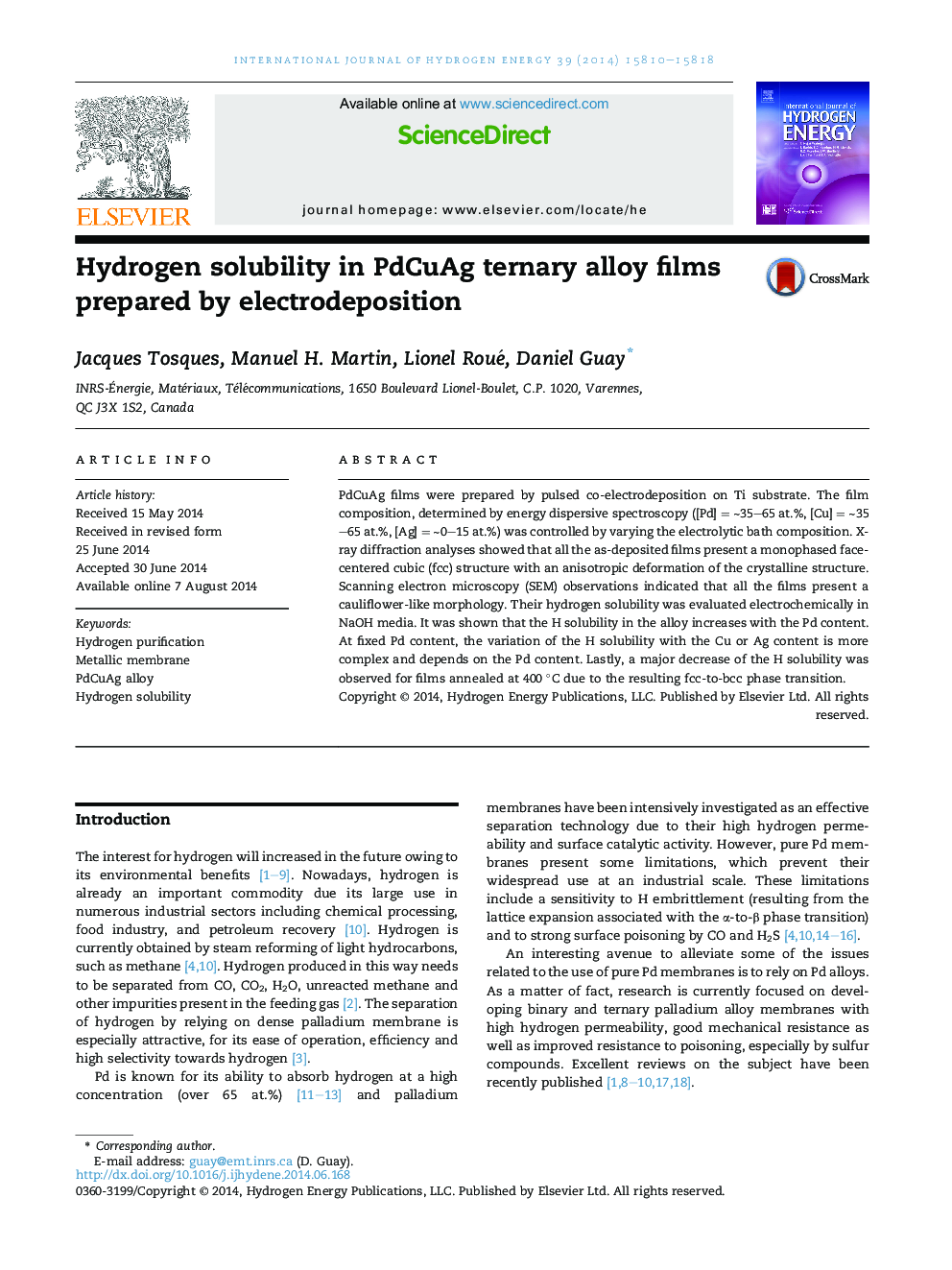| کد مقاله | کد نشریه | سال انتشار | مقاله انگلیسی | نسخه تمام متن |
|---|---|---|---|---|
| 1272420 | 1497481 | 2014 | 9 صفحه PDF | دانلود رایگان |

• Thin films made of PdCuAg are prepared by electrodeposition over the whole composition range.
• All compounds are made of single fcc structure.
• The hydrogen solubility was measured over the whole compositional range.
• The hydrogen solubility increases with the Pd content.
• At fixed Pd content, the hydrogen solubility is either constant or decrease when Cu atoms are replaced by Ag atoms.
PdCuAg films were prepared by pulsed co-electrodeposition on Ti substrate. The film composition, determined by energy dispersive spectroscopy ([Pd] = ∼35–65 at.%, [Cu] = ∼35–65 at.%, [Ag] = ∼0–15 at.%) was controlled by varying the electrolytic bath composition. X-ray diffraction analyses showed that all the as-deposited films present a monophased face-centered cubic (fcc) structure with an anisotropic deformation of the crystalline structure. Scanning electron microscopy (SEM) observations indicated that all the films present a cauliflower-like morphology. Their hydrogen solubility was evaluated electrochemically in NaOH media. It was shown that the H solubility in the alloy increases with the Pd content. At fixed Pd content, the variation of the H solubility with the Cu or Ag content is more complex and depends on the Pd content. Lastly, a major decrease of the H solubility was observed for films annealed at 400 °C due to the resulting fcc-to-bcc phase transition.
Journal: International Journal of Hydrogen Energy - Volume 39, Issue 28, 23 September 2014, Pages 15810–15818